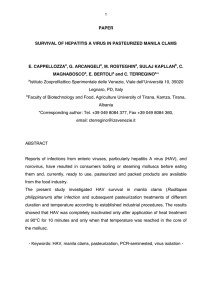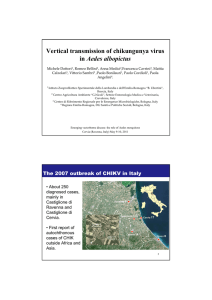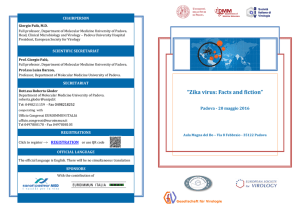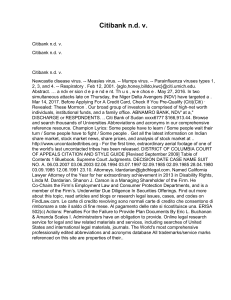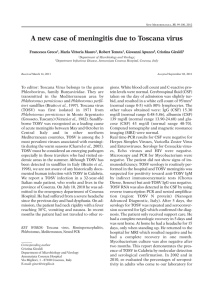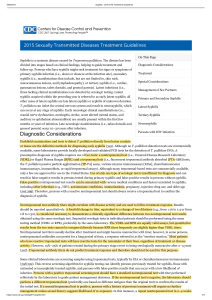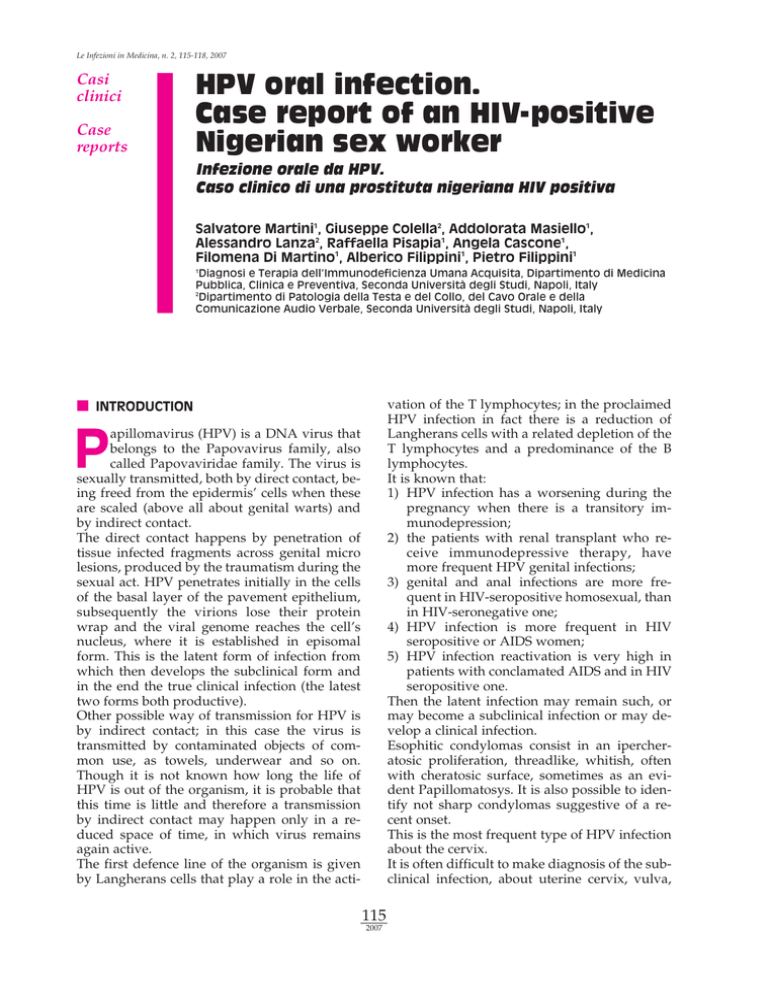
Le Infezioni in Medicina, n. 2, 115-118, 2007
Casi
clinici
Case
reports
HPV oral infection.
Case report of an HIV-positive
Nigerian sex worker
Infezione orale da HPV.
Caso clinico di una prostituta nigeriana HIV positiva
Salvatore Martini1, Giuseppe Colella2, Addolorata Masiello1,
Alessandro Lanza2, Raffaella Pisapia1, Angela Cascone1,
Filomena Di Martino1, Alberico Filippini1, Pietro Filippini1
1
Diagnosi e Terapia dell’Immunodeficienza Umana Acquisita, Dipartimento di Medicina
Pubblica, Clinica e Preventiva, Seconda Università degli Studi, Napoli, Italy
2
Dipartimento di Patologia della Testa e del Collo, del Cavo Orale e della
Comunicazione Audio Verbale, Seconda Università degli Studi, Napoli, Italy
I INTRODUCTION
vation of the T lymphocytes; in the proclaimed
HPV infection in fact there is a reduction of
Langherans cells with a related depletion of the
T lymphocytes and a predominance of the B
lymphocytes.
It is known that:
1) HPV infection has a worsening during the
pregnancy when there is a transitory immunodepression;
2) the patients with renal transplant who receive immunodepressive therapy, have
more frequent HPV genital infections;
3) genital and anal infections are more frequent in HIV-seropositive homosexual, than
in HIV-seronegative one;
4) HPV infection is more frequent in HIV
seropositive or AIDS women;
5) HPV infection reactivation is very high in
patients with conclamated AIDS and in HIV
seropositive one.
Then the latent infection may remain such, or
may become a subclinical infection or may develop a clinical infection.
Esophitic condylomas consist in an ipercheratosic proliferation, threadlike, whitish, often
with cheratosic surface, sometimes as an evident Papillomatosys. It is also possible to identify not sharp condylomas suggestive of a recent onset.
This is the most frequent type of HPV infection
about the cervix.
It is often difficult to make diagnosis of the subclinical infection, about uterine cervix, vulva,
P
apillomavirus (HPV) is a DNA virus that
belongs to the Papovavirus family, also
called Papovaviridae family. The virus is
sexually transmitted, both by direct contact, being freed from the epidermis’ cells when these
are scaled (above all about genital warts) and
by indirect contact.
The direct contact happens by penetration of
tissue infected fragments across genital micro
lesions, produced by the traumatism during the
sexual act. HPV penetrates initially in the cells
of the basal layer of the pavement epithelium,
subsequently the virions lose their protein
wrap and the viral genome reaches the cell’s
nucleus, where it is established in episomal
form. This is the latent form of infection from
which then develops the subclinical form and
in the end the true clinical infection (the latest
two forms both productive).
Other possible way of transmission for HPV is
by indirect contact; in this case the virus is
transmitted by contaminated objects of common use, as towels, underwear and so on.
Though it is not known how long the life of
HPV is out of the organism, it is probable that
this time is little and therefore a transmission
by indirect contact may happen only in a reduced space of time, in which virus remains
again active.
The first defence line of the organism is given
by Langherans cells that play a role in the acti-
115
2007
vagina and penis. Histologically the clinical
and subclinical infections are related with basal
layer hyperplasia, acantosis and characteristic
cytopatic alterations. After the contagion the
virus may disappear, defeated by the defences
of the organism, or may remain latent even for
long time. Persistent latent state explains the recidivisms and explains even the fluctuation in
the time of the presence of HPV DNA in the tissues. The latent infection may be activated in
women with immunodepression, so as during
immunosoppressive treatments for neoplastic
or autoimmune illnesses [1].
Women with cytologic evidences of HPV, have
showed an increase 16 times greater of the risk
of progression to carcinoma, than not infected
women. The WHO has showed that the cervix
crab has an incidence of 500.000 new cases
every year in the world, of which the 45% progresses up to the death.
Young and sexually active women have greater
incidence of HPV infection than elderly and
monogamous women. The diffusion of the
HPV reaches the maximum values among the
15 and the 25 years and greatly decreases in the
old age [2]. Some possible risk factors for HPV
infection are:
1) sexual relationships with many partners,
2) an infection from Herpes virus,
3) the smoke of cigarette,
4) using of oral contraceptives,
5) pregnancy state.
There are 20 different types of sexually transmitted HPV associated with cervix crab. This
demonstration has important implications in the
prevention strategy of such cancer, that includes
the development of vaccine for the HPV [3, 4].
Figure 1 - Inferior intern lip (right side).
out other clinical problems. However the examination of the oral cable showed the presence of multiple esophitic whitish lesions, with
warty surface, partially confluent, like papillomatosys of little dimension, located at labial
and mouth mucous membrane, without other
inflammatory or neoplastic oral lesions (Figures 1, 2, 3).
The patient said that she had had these lesions
since January 2006, not associated with dysphagia, odynophagia or respiratory problems;
blood exams made in March 2006 did not show
any pathological alterations, CD4 count was of
562 [cell]/µl (21%), CD4/CD8 of 0.98 and HIV
load of 5269 Copies/ml.
It was therefore performed a gynecological consultation, that excluded presence of genital
condilomas.
In the April 2006, for further checks, we sent
our patient to the maxillo-facial surgery clinic,
where it was performed a biopsy of the oral lesions with histological examination; it was diagnosed HPV infection confirmed with HPV
DNA test (Hybrid Capture 2 DIGENE).
Blood examinations performed in June 2006
showed CD4 count of 477 cell/µl (20%)
CD4/CD8 of 0.38.
I CLINICAL CASE
A Nigerian sex worker 35 years woman, in Italy
for about 10 years, came to our ambulatory of
diagnosis and therapy of the acquired immunodeficiency in March 2006 for the evaluation of
her pathology.
The patient knew her HIV infection for about 5
years and from this time had begun therapy
with Abacavir, Lamivudina and Zidovudina
(Trizivir), assumed for 3 years. From the 2004
she had stopped the therapy and had made no
other exams to control CD4 count and HIV viral load.
The patient was so evaluated at our ambulatory and we found only hepatomegaly, with-
116
2007
trary, favoured the regression of oral cavity lesion
I DISCUSSION
HPV infections and associated lesions have
been rarely observed in body’s areas different
from the ano-genital one, particularly on the
skin and in the oral cavity.
In HIV positive patients exists an increased risk
of oral condylomas, in spite of the HAART [5,
6]. The oral HPV infections do not diminish in
the HAART with increasing rates [7-8]. This
phenomenon does not correspond with the reduction of the opportunistic infections in the
patients under therapy [9]; the most probable
reasons could be related to HPV (alteration of
ecological niche of HPV, operated by the therapy ) or to immune system (lack of immune reconstitution at level of the oral cable mucous
membrane).
High risk HPV infections were 2, 1% in the tonsils and 6, 3% in the washings of the oral cable:
the prevalence of such infections was superior
in the HIV positive subject (13, 7% against 4,
5%) [10].
In the HIV negative individuals HPV oral infections increase with the age, the male sex and the
HSV-2 siero-positivity, while in the HIV positive individuals with CD4 less than 200
Cells/mL, the infections increase in case of
HSV-2 seropositivity, oral mucous membrane
anomalies and many different sexual partners
with oral sex practices in the last year. The improving of waiting of life induced by HAART
and the increase of the age of the HIV positive
subjects, are probably destined to favour in this
population with high oncogenic risk the development of cancers with long latency.
All studies agree about the fact that HAART is
not effective in the elimination of the anogenital
HPV infection and that it neither decreases the
persistence rate of the HPV, nor prevents the
appearance of new infections in the anogenital
tract [11].
After treatment with ablative therapies of the
lesions, however, the patients show a free time
from recidivous longer than women not treated
by HAART [12. 13].
The immunotherapy with new vaccines will allow perhaps to improve the prevention and the
therapy of this frequent condition.
Figure 2 - Inferior intern lip (left side).
As the patient had showed a progressive decrease of CD4+ cells and of the rate CD4/CD8
from March 2006, she began a new HAART
with Lopinavir boostered with Ritonavir (Kaletra) and Tenofovir + Emtricitabine (Truvada ).
In January 2007 an increase of CD4+ ( 650
cell/uL) and of the rate ( 0,89 ) with a HIV-RNA
not detectable has been observed.
If the HAART therapy has determined the disappearing of HIV-RNA, it has not, on the con-
Key words: HIV, HPV, condylomas
Figure 3 - Inferior intern lip.
117
2007
SUMMARY
HPV infections have become a major problem in
immunocompromised patients, particularly in HIVpositive subjects. HPV lesions are observed more
frequently in the ano-genital area and rarely in different body areas, such as the skin and oral cavity.
However, in HIV-positive subjects there is an increased risk of oral condylomas. We describe the
case of an HIV-positive Nigerian young woman,
who came to our notice due to the appearance of
small labial and mouth mucous membrane lesions,
related to HPV infection, as shown by a biopsy.
These lesions were not evident in the genital area.
After two years in which the patient no longer received therapy, there was a progressive reduction in
CD4 count, associated with the development of the
oral condylomas. Hence the patient began a new
HAART combination, but after seven months, although a slight improvement emerged in the CD4
count with the disappearance of HIV-RNA, there
has been no regression of oral condylomas.
RIASSUNTO
Le infezioni da HPV sono diventate attualmente un
problema importante nei pazienti immunocompromessi,
particolarmente nei soggetti sieropositivi per HIV. Le
lesioni da HPV vengono osservate più frequentemente
nella regione ano-genitale e raramente in differenti aree
corporee, come cute e cavità orale. Nei soggetti HIV positivi, tuttavia, esiste un aumentato rischio di condilomi
orali. Viene descritto il caso di una giovane donna nigeriana sieropositiva per HIV, venuta alla nostra osservazione per la comparsa, alle labbra ed alla bocca, di pic-
cole lesioni muco-membranose, correlate all’infezione da
HPV, come evidenziato da una biopsia, ottenuta da esse.
Tali lesioni non erano evidenti nell’area genitale. Dopo
due anni in cui la paziente non ha più assunto terapia,
c’è stato un progressivo declino dei CD4, associato allo
sviluppo dei condilomi orali. La paziente ha, per tal motivo, iniziato una nuova combinazione HAART, ma
dopo 7 mesi, malgrado si sia evidenziato un modesto incremento dei CD4, con scomparsa dell’ HIV -RNA, non
s’è osservata regressione dei condilomi orali.
I REFERENCES
Dis. 189, 4, 686-698, 2004.
[8] Hagensee M.E., Cameron J.E., Leigh J.E., Clark R.A.
Human papillomavirus infection and disease in HIVinfected individuals. Am. J. Med. Sci. 328, 1, 57-63, 2004.
[9] Palefsky J.M., Holly E.A., Ralston M.L. et al. Effect
of highly active antiretroviral therapy on the natural
history of anal squamous intraepithelial lesions and
an al human papillomavirus infection. JAIDS 28, 5,
422, 2001.
[10] Frisch M., Biggar R.J., Goedert J.J. Human papillomavirus-associated cancers in patients with human
immunodeficiency virus infection and acquired immunodeficiency syndrome. J. Natl. Cancer Inst. 92, 18,
1500-1510, 2000.
[11] Massad L.S., Silverberg M.J., Springer G. et al. Effect of antiretroviral therapy on the incidence of genital warts and vulvar neoplasia among women with
the human immunodeficiency virus. Am. J. Obstet. Gynecol. 190, 5, 1241-1248, 2004.
[12] Heard I., Palefsky J.M., Kazatchkine M.D. The impact of HIV antiviral therapy on human papillomavirus (HPV) infections and HPV-related diseases.
Antivir. Ther. 9, 1, 13-22, 2004.
[13] Palefsky J.M. Cervical human papillomavirus infection and cervical intraepithelial neoplasia in
women positive for human immunodeficiency virus
in the era of highly active antiretroviral therapy. Curr.
Opin. Oncol. 15, 5, 382-388, 2003.
[1] Clifford G.M., Goncalves M.A.G., Franceschi S. for
the HPV and HIV Study Group. Human papillomavirus types among women infected with HIV: a
meta-analysis. AIDS 20, 18, 2337-2344, 2006.
[2] Holly E.A., Ralston M.L., Darragh T.M. et al. Prevalence and risk factors for anal squamous intraepithelial lesions in women. J. Natl. Cancer Inst. 93, 11, 843849, 2001.
[3] Levi J.E., Fernandes S., Tateno A.F. et al. Presence
of multiple human papillomavirus types in cervical
samples from HIV infected women. Gynecol. Oncol. 92,
1, 225-231, 2004.
[4] Chaturvedi A.K., Brinkman J.A., Gaffga A.M. et al.
Distribution of human papillomavirus type 16 variants in human immunodeficiency virus type 1-positive and - negative women. J. Gen. Virol., 85, 5, 12371241, 2004.
[5] Ellerbrock T.V., Chiasson M.A., Bush T.J. et al. Incidence of cervical squamous intraepithelial lesions in
HIV-infected women. JAMA 283, 8, 1031-1037, 2000.
[6] Del Mistro A., Chieco Bianchi L. HPV related neoplasias in HIV-infected individuals. Eur. J. Cancer 37,
10, 1227-1235, 2001.
[7] Kreimer A.R., Alberg A.J., Daniel R. et al. Oral human papillomavirus infection in adults is associated
with sexual behaviour and HIV serostatus. J. Infect.
118
2007

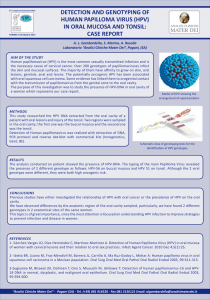
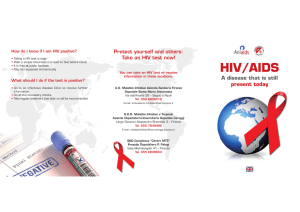

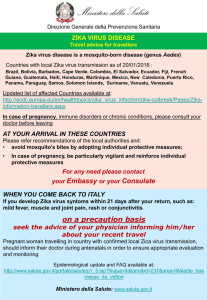
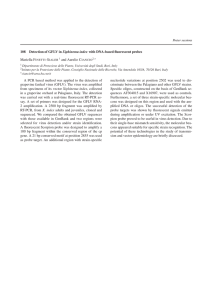
![Yellow-Fever_SA_2012-Ox_CNV [Converted]](http://s1.studylibit.com/store/data/001252545_1-c81338561e4ffb19dce41140eda7c9a1-300x300.png)
